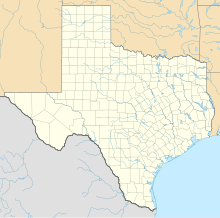Fort Parker massacre
| Fort Parker Massacre | |||||||
|---|---|---|---|---|---|---|---|
| Part of the Indian Wars | |||||||
 Fort Parker |
|||||||
|
|||||||
| Belligerents | |||||||
|
Kiowa |
|
||||||
| Commanders and leaders | |||||||
| unknown | John Parker | ||||||
| Strength | |||||||
| 100-600 | ~15 militia | ||||||
| Casualties and losses | |||||||
| none | 5 killed, 5 captured |
||||||
|
|
|||||||
The Fort Parker massacre was an event in May 1836 in which members of the pioneer Parker family were killed in a raid by Native Americans. In this raid, a 9-year-old girl, Cynthia Ann Parker, was captured and spent most of the rest of her life with the Comanche, marrying a Chief, Peta Nocona, and giving birth to a son, Quanah Parker, who would become the last Chief of the Comanches. Her brother, John Richard Parker, who was also captured, was ransomed back after six years, but unable to adapt to white society, returned to the Comanches.
Fort Parker was established about two miles (3 km) west of present-day Groesbeck, Limestone County, Texas, USA by Elder John Parker (1758–1836), his sons, Benjamin, Silas and James, plus other members of the Pilgrim Predestinarian Baptist Church of Crawford County, Illinois. Led by John and Daniel Parker, they came to Texas in 1833. Daniel's party first settled in Grimes County, then later moved to Anderson County near present-day Elkhart and established Pilgrim Church. Elder John Parker's group settled near the headwaters of the Navasota River, and built a fort for protection against Native Americans. It was completed in March 1834. Fort Parker's 12 foot (4 m) high log walls enclosed four acres (16,000 m²). Blockhouses were placed on two corners for lookouts, and six cabins were attached to the inside walls. The fort had two entrances, a large double gate facing south, and a small gate for easy access to the spring. Most of the residents of the fort were part of the extended family of John and Sarah Parker.
...
Wikipedia

